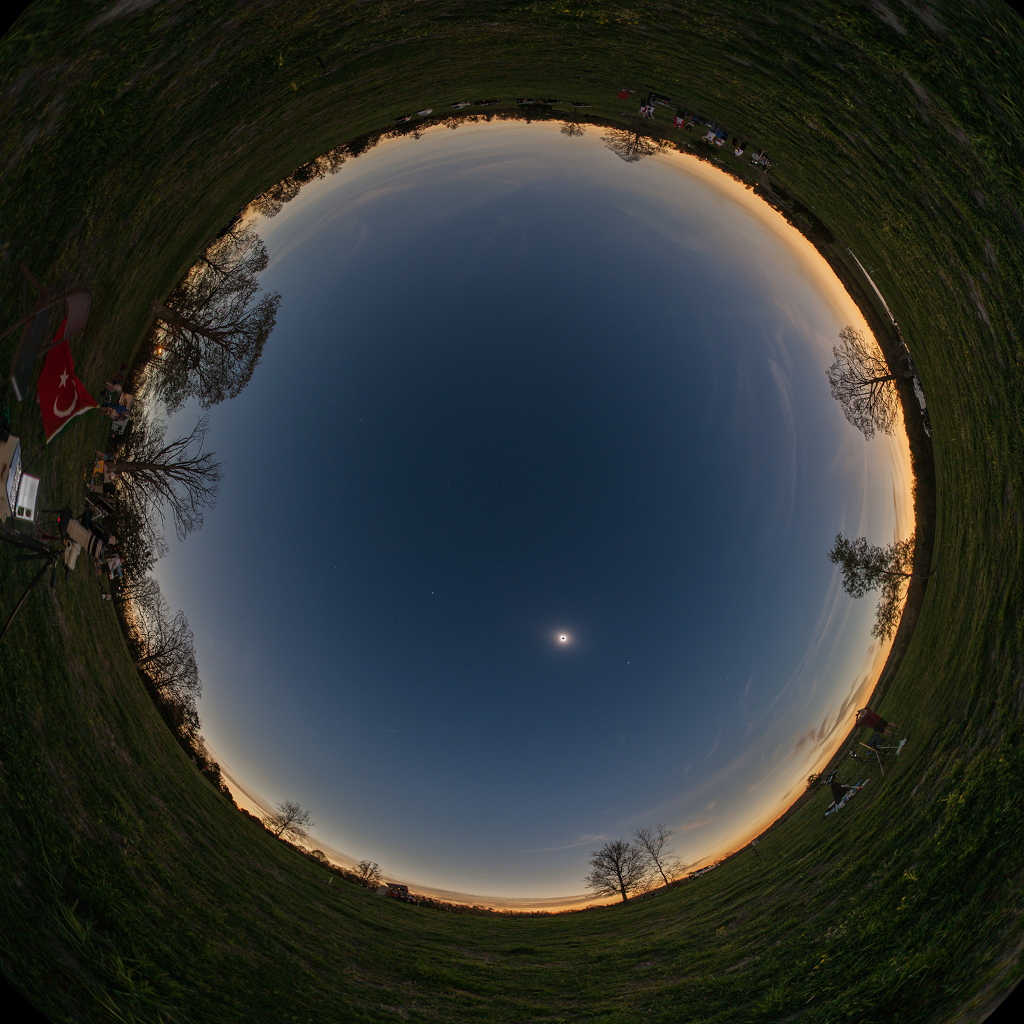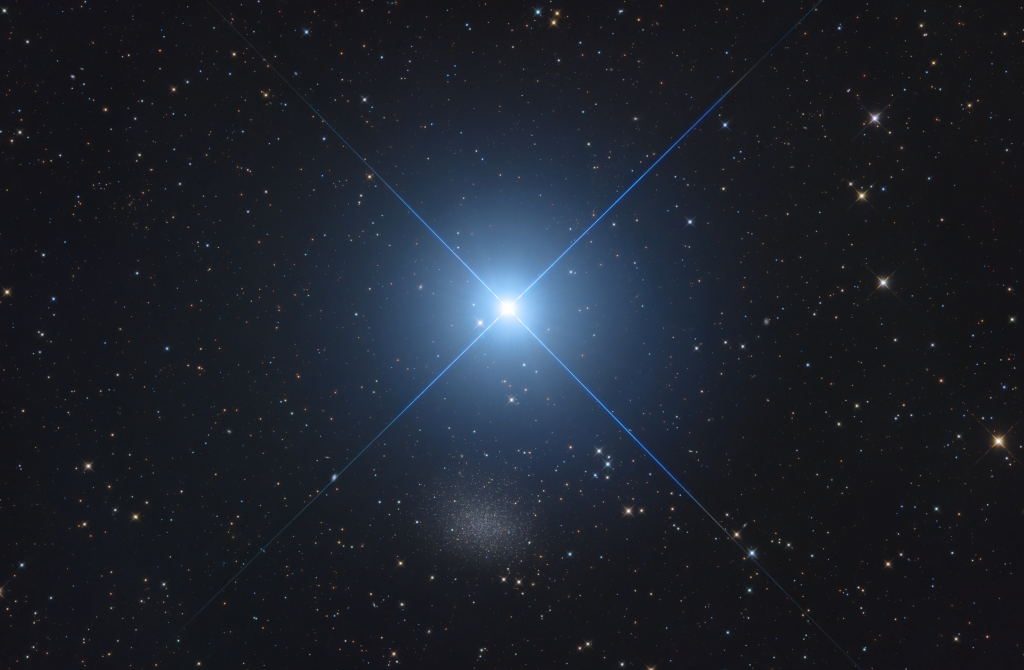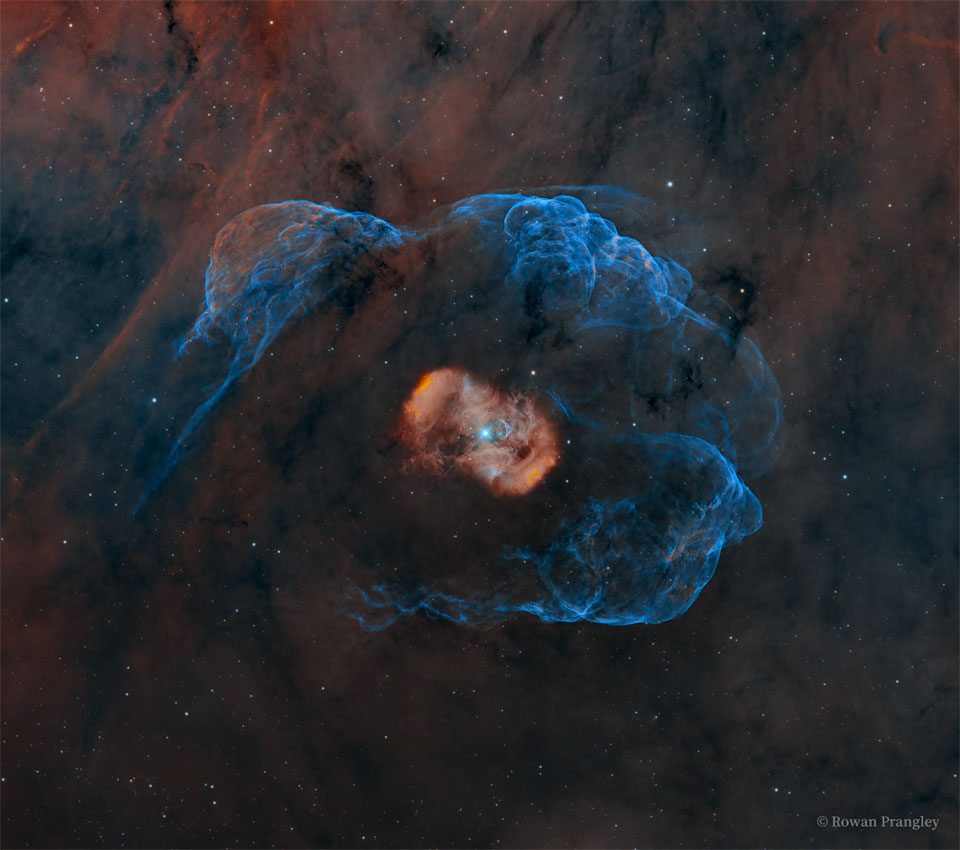Nombre total de pages vues
27/04/2024
SANTé/MEDECINE - Homme ou animal : qui est le plus fort ? - Taille
ASTRONOMY - All Sky Moon Shadow
2024 April 27
Image Credit & Copyright: Tunc Tezel (TWAN)
Explanation: If the Sun is up but the sky is dark and the horizon is bright all around, you might be standing in the Moon's shadow during a total eclipse of the Sun. In fact, the all-sky Moon shadow shown in this composited panoramic view was captured from a farm near Shirley, Arkansas, planet Earth. The exposures were made under clear skies during the April 8 total solar eclipse. For that location near the center line of the Moon's shadow track, totality lasted over 4 minutes. Along with the solar corona surrounding the silhouette of the Moon planets and stars were visible during the total eclipse phase. Easiest to see here are bright planets Venus and Jupiter, to the lower right and upper left of the eclipsed Sun.
26/04/2024
SANTé/MEDECINE - Histoire - 2010 : un exosquelette pour faire remarcher les paraplégiques
ASTRONOMY - Regulus and the Dwarf Galaxy
2024 April 26
Image Credit & Copyright: Markus Horn
Explanation: In northern hemisphere spring, bright star Regulus is easy to spot above the eastern horizon. The alpha star of the constellation Leo, Regulus is the spiky star centered in this telescopic field of view. A mere 79 light-years distant, Regulus is a hot, rapidly spinning star that is known to be part of a multiple star system. Not quite lost in the glare, the fuzzy patch just below Regulus is diffuse starlight from small galaxy Leo I. Leo I is a dwarf spheroidal galaxy, a member of the Local Group of galaxies dominated by our Milky Way Galaxy and the Andromeda Galaxy (M31). About 800 thousand light-years away, Leo I is thought to be the most distant of the known small satellite galaxies orbiting the Milky Way. But dwarf galaxy Leo I has shown evidence of a supermassive black hole at its center, comparable in mass to the black hole at the center of the Milky Way.
25/04/2024
ASTRONOMY - NGC 604: Giant Stellar Nursery
2024 April 25
Image Credit: NASA, ESA, CSA, STScI
Explanation: Located some 3 million light-years away in the arms of nearby spiral galaxy M33, giant stellar nursery NGC 604 is about 1,300 light-years across. That's nearly 100 times the size of the Milky Way's Orion Nebula, the closest large star forming region to planet Earth. In fact, among the star forming regions within the Local Group of galaxies, NGC 604 is second in size only to 30 Doradus, also known as the Tarantula Nebula in the Large Magellanic Cloud. Cavernous bubbles and cavities in NGC 604 fill this stunning infrared image from the James Webb Space Telescope's NIRCam. They are carved out by energetic stellar winds from the region's more than 200 hot, massive, young stars, all still in early stages of their lives.
24/04/2024
ASTRONOMY - Dragon's Egg Bipolar Emission Nebula
2024 April 24
Image Credit & Copyright: Rowan Prangley
Explanation: How did a star form this beautiful nebula? In the middle of emission nebula NGC 6164 is an unusually massive star. The central star has been compared to an oyster's pearl and an egg protected by the mythical sky dragons of Ara. The star, visible in the center of the featured image and catalogued as HD 148937, is so hot that the ultraviolet light it emits heats up gas that surrounds it. That gas was likely thrown off from the star previously, possibly the result of a gravitational interaction with a looping stellar companion. Expelled material might have been channeled by the magnetic field of the massive star, in all creating the symmetric shape of the bipolar nebula. NGC 6164 spans about four light years and is located about 3,600 light years away toward the southern constellation Norma.
23/04/2024
ASTRONOMIE - Survolez un magnifique lac de lave de 200 km de diamètre sur la lune volcanique Io !
SANTé/MEDECINE - HISTOIRE - 1980 : invention de l'IRM
SANTé/MEDECINE - Les avancées contre le cancer
ASTRONOMY - Contrail Shadow X
2024 April 23
Image Credit & Copyright: Fatih Ekmen
Explanation: What created this giant X in the clouds? It was the shadow of contrails illuminated from below. When airplanes fly, humid engine exhaust may form water droplets that might freeze in Earth's cold upper atmosphere. These persistent streams of water and ice scatter light from the Sun above and so appear bright from below. On rare occasions, though, when the Sun is near the horizon, contrails can be lit from below. These contrails cast long shadows upwards, shadows that usually go unseen unless there is a high cloud deck. But that was just the case over Istanbul, Türkiye, earlier this month. Contrails occur all over planet Earth and, generally, warm the Earth when the trap infrared light but cool the Earth when they efficiently reflect sunlight. The image was taken by a surprised photographer in the morning on the way to work.
ASTRONOMY - Nebulas and Clusters in Sagittarius
2025 September 17 Nebulas and Clusters in Sagittarius Image Credit & Copyright: J. De Winter , C. Humbert , C. Robert & V. Sab...

-
2022 September 26 All the Water on Planet Earth Illustration Credit: Jack Cook, Adam Nieman, Woods Hole Oceanographic Institution ; Data ...
-
2021 August 11 Mammatus Clouds over Saskatchewan Image Credit & Copyright: Michael F Johnston Explanation: When do cloud bottoms appe...









